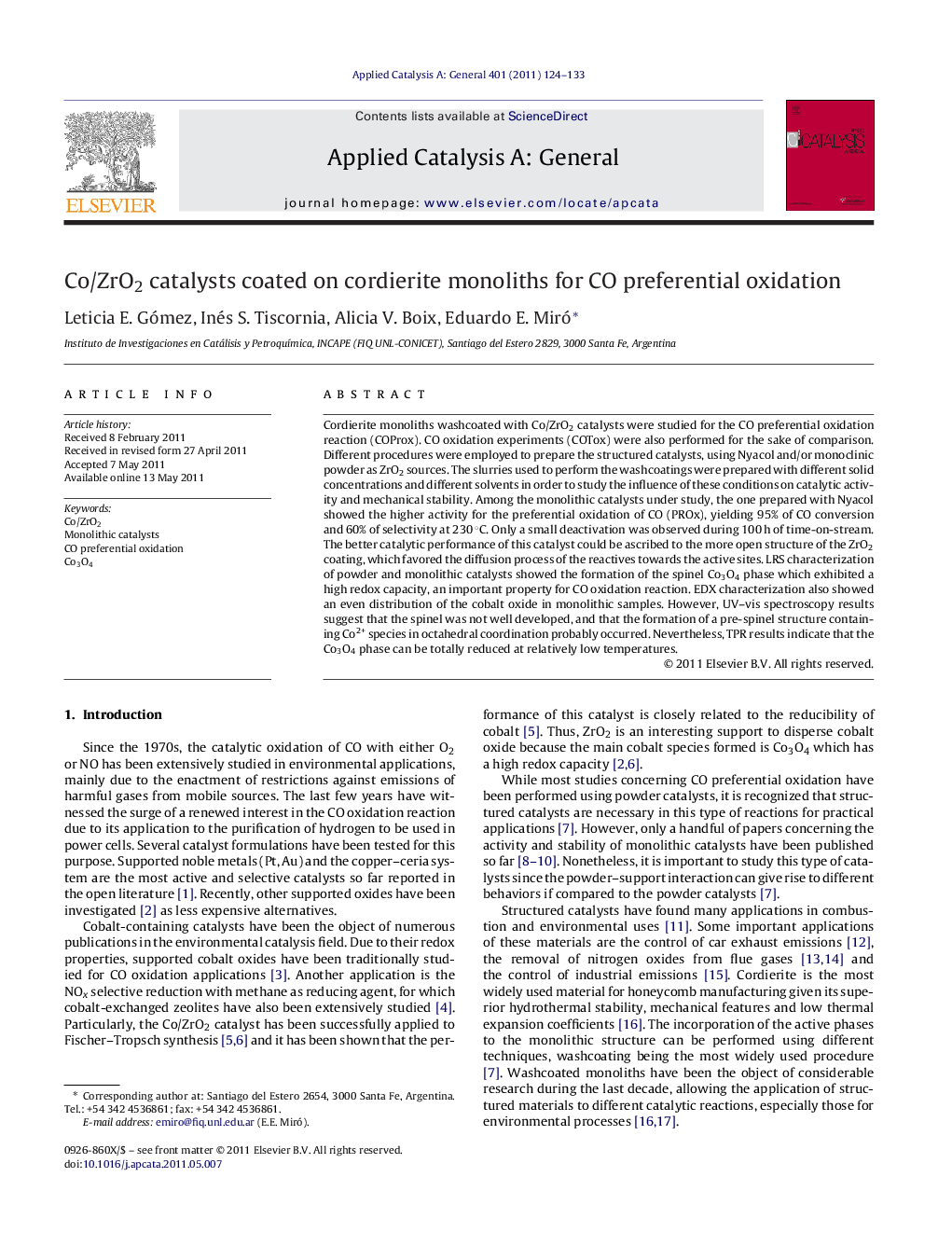| Article ID | Journal | Published Year | Pages | File Type |
|---|---|---|---|---|
| 41568 | Applied Catalysis A: General | 2011 | 10 Pages |
Cordierite monoliths washcoated with Co/ZrO2 catalysts were studied for the CO preferential oxidation reaction (COProx). CO oxidation experiments (COTox) were also performed for the sake of comparison. Different procedures were employed to prepare the structured catalysts, using Nyacol and/or monoclinic powder as ZrO2 sources. The slurries used to perform the washcoatings were prepared with different solid concentrations and different solvents in order to study the influence of these conditions on catalytic activity and mechanical stability. Among the monolithic catalysts under study, the one prepared with Nyacol showed the higher activity for the preferential oxidation of CO (PROx), yielding 95% of CO conversion and 60% of selectivity at 230 °C. Only a small deactivation was observed during 100 h of time-on-stream. The better catalytic performance of this catalyst could be ascribed to the more open structure of the ZrO2 coating, which favored the diffusion process of the reactives towards the active sites. LRS characterization of powder and monolithic catalysts showed the formation of the spinel Co3O4 phase which exhibited a high redox capacity, an important property for CO oxidation reaction. EDX characterization also showed an even distribution of the cobalt oxide in monolithic samples. However, UV–vis spectroscopy results suggest that the spinel was not well developed, and that the formation of a pre-spinel structure containing Co2+ species in octahedral coordination probably occurred. Nevertheless, TPR results indicate that the Co3O4 phase can be totally reduced at relatively low temperatures.
Graphical abstract.Figure optionsDownload full-size imageDownload high-quality image (203 K)Download as PowerPoint slideHighlights► Monoliths washcoated with Co/ZrO2 catalysts were studied for the COProx reaction. ► The one prepared with Nyacol showed 95% of CO conversion and 60% of selectivity at 230 °C. ► The open structure of the Nyacol favored the diffusion process towards the active sites. ► The Co3O4 phase exhibited a high redox capacity, an important property for CO oxidation.
